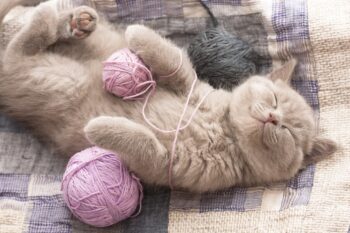Did you know that scientists have determined that cats make over 100 vocalizations? Not only do they utilize cat noises, but they also use body language to help get their meaning across. Listen to your cat and observe any action from body position, eyes, ears, or even fur. These are all part of cat language. What is your cat saying? Watch and listen and perhaps you can understand.
Though your cat might make about 100 different sounds, these can all be divided into some main classes of noises. These include chirping or trilling, meowing, purring, hissing, growling, or that soft little chatter they make when watching a bird through a window. In heat your cat might caterwaul. In stressful situations, expect screaming, howling, or yowling.

As you can see, cats communicate through a wide range of sounds, each with its own meaning. Simple trills and chirps can often indicate curiosity or excitement, while meows and purrs can convey everything from hunger to contentment. Growls, on the other hand, usually signal displeasure or fear.
My cat, Mocha, is part Siamese, which may be one reason why he is so talkative. His vocalization is quite diverse, and sometimes it seems like he’s carrying on a complete conversation. He uses his trills and chirps to get my attention, at times to tell me it’s time to get up, and sometimes just because he seems to be feeling extra-affectionate.
Body Language Has Great Importance
Body language plays a significant role in decoding cat sounds. For example, a cat that is meowing while rubbing against your legs is likely seeking attention or food. If a cat’s tail is upright and twitching, that’s typically an indication that the cat is feeling playful or interested, but if the tail is puffed up, that’s a sign of fear or agitation
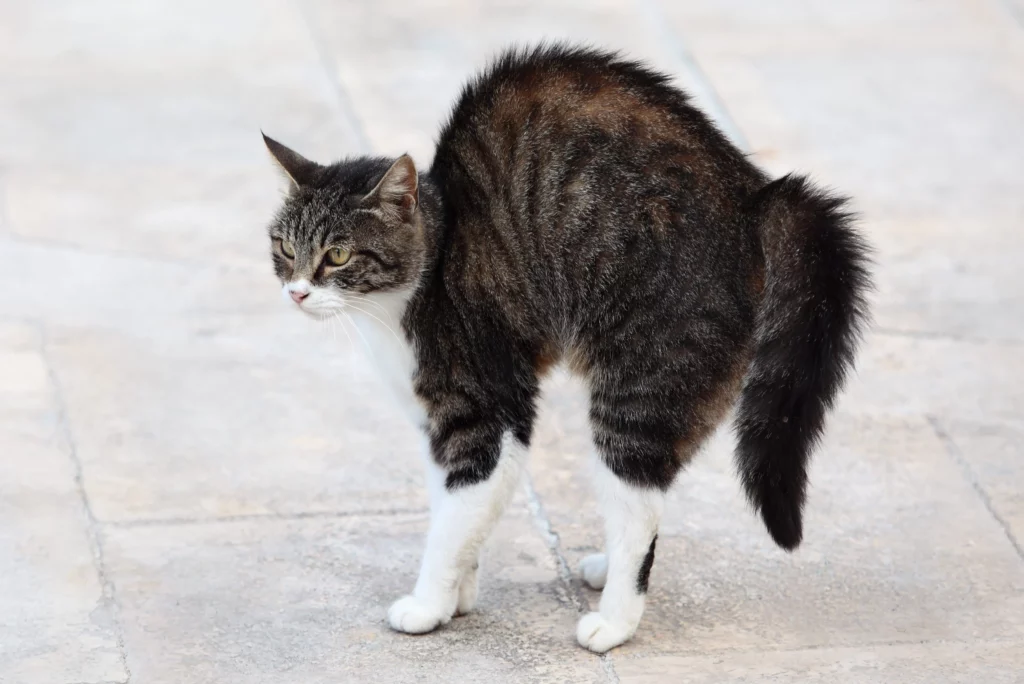
Trying to translate kitty language can be a challenge. It is helpful to recognize the context in which a sound is made. Here is where your talent for observation can come into play. If your cat meows by the food bowl, he is either hungry or thinks he’d like some food. Mocha seems to play the opportunist role when it comes to food, trying to convince me he’s really starving and needs to eat immediately! He has a vivid kitty imagination.
However, if kitty is hissing in the middle of a play session, he’s likely overstimulated or startled. Taking note of the environment and circumstances can provide essential clues in understanding what your cat is trying to communicate.
Decoding A Variety Of Common Cat Noises
Of course, meowing becomes a standard part of a cat conversation. Mother cats meow to their kittens and kittens meow to their mothers, as much as locator beacons as anything else. That is especially true with very young babies before their eyes are open. They locate mama and their food source by meowing as if to say, “Here I am — where are you, Mother dear.”
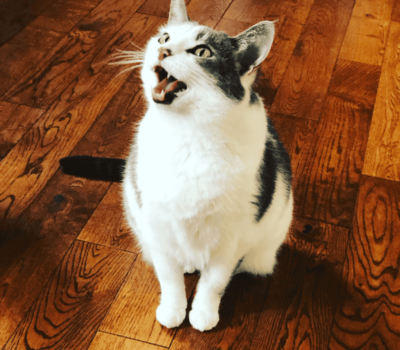
Once the kitten has grown, he no longer meows to other cats. Instead, the cat meows to humans. Kitty recognizes that the meow will get our attention, so it becomes a way to communicate with us.
Different types of meows can mean various things, depending on pitch and frequency. A short, high-pitched meow might be a greeting, while a series of insistent meows could be your cat demanding something. Paying attention to these subtleties can help you understand what your cat tries to tell you.
The Purr’s Purpose
We can often interpret the cat’s purr to be a happy sound. When kitty is content, perhaps snuggling with you and getting some scratches in all the right places, that purr-engine can go full throttle. Often a cat will purr himself to sleep, and if you are lucky and sharing a bed, the purr can help you, too, to relax and enter dreamtime.
The purr, however, can also indicate stress or pain. A mother cat purrs when giving birth. An injured cat may purr as a means to help with healing. It has been shown that the frequency of a cat’s purr can help heal broken bones, so it makes sense that kitty will use that healing resource on himself.
Sounds That Indicate An Unhappy Cat
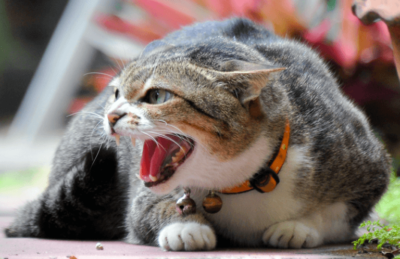
If kitty is hissing, he is usually frightened. At any rate, a hissing cat is not a happy cat. The teeth may be bared, eyes widened, and ears back. Don’t try to get too close to this cat — stay away! Let kitty settle down before approaching.
Growling is a sign of aggression. Again, this cat warns you not to get too close. Of course, if the cat is screaming, howling, or yowling, he may be preparing for a fight. Determine the cause of the sound before trying to reason with the cat.
Hissing, growling, and spitting are clear indicators of stress or fear. If your cat is making these sounds, it’s best to give them space and determine what might be causing their distress. Loud noises, new pets, or unfamiliar visitors can all be triggers. Identifying and minimizing these stressors can help create a more peaceful environment for your cat.
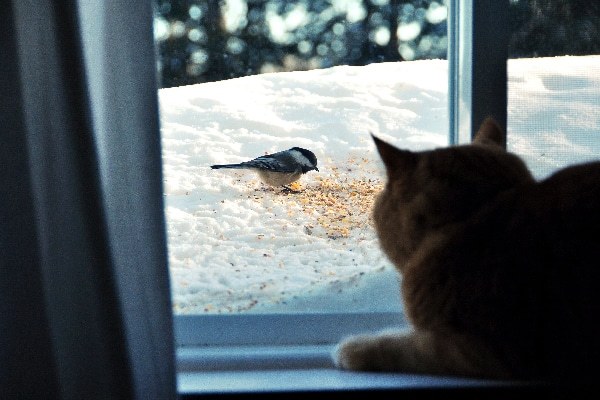
A Cat Chirping At Birds Feels Frustration
Have you seen your cat at the window, watching a bird outside, and talking about what he sees with a funny little chirping sound? It’s almost as if he’s imitating the sound the bird makes. Chances are, he wants that bird badly but can’t get through the glass to get it. It’s a case of kitty frustration.
This Cat Is Friendly
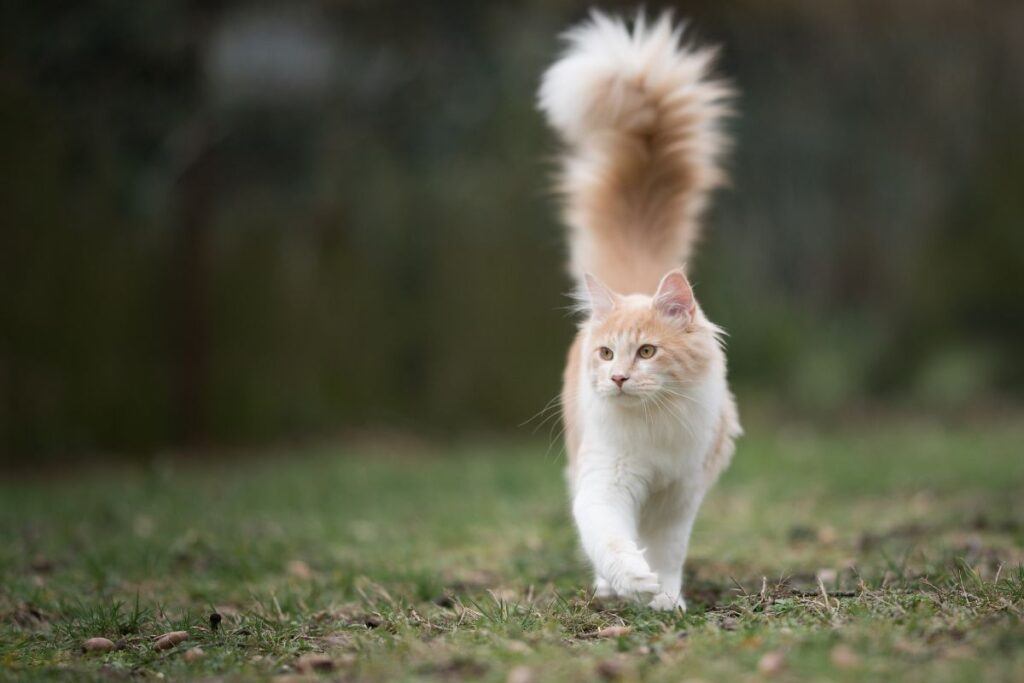
A cat who is chirping, or as it’s sometimes called, murmuring, is a social sound. It generally indicates a greeting, giving you attention or acknowledgement, or approval. Basically this sound is a high-pitched hello. Mocha uses his chirp to indicate many moods, all of them basically happy. He tells me how happy he is with his dinner, how much he loves my attention, and how he looks forward to sharing my bed at night. Sometimes he’s trying to talk me into spending extra time playing with him. He’s really quite a conversationalist.
One of my references noted that cat-human communication has a lot in common. Both species rely on vocal messages and visual signals. We humans might not have a tail we can hoist on high when we’re happy or fur that will stand up when we get upset or angry, but we can show through facial expression and bodily posture that we share those feelings. The tone of our vocalization can also tell a lot about our feelings. Kitty can demonstrate feelings through his cat noises as well.
Strengthening Your Bond through Effective Communication
Responding appropriately to your cat’s vocalizations can significantly improve your relationship. If your cat meows for attention, acknowledging it with a gentle touch or soothing words can be reassuring. Consistent responses help your cat understand that you are attentive to its needs.
Creating a safe and reassuring environment is crucial. Ensure your cat has a quiet space to retreat to when feeling overwhelmed. Regular playtime and interaction can also help reduce anxiety and strengthen your bond.
Positive reinforcement is key in encouraging desired behaviors. Rewarding your cat with treats or affection when you receive appropriate communication helps reinforce those behaviors. This method builds trust and promotes better understanding between you and your feline friend.
References I used for this post:
https://www.dailypaws.com/cats-kittens/behavior/common-cat-behaviors/cat-noises
https://www.hillspet.com/cat-care/behavior-appearance/cat-chirping?lightboxfired=true#

